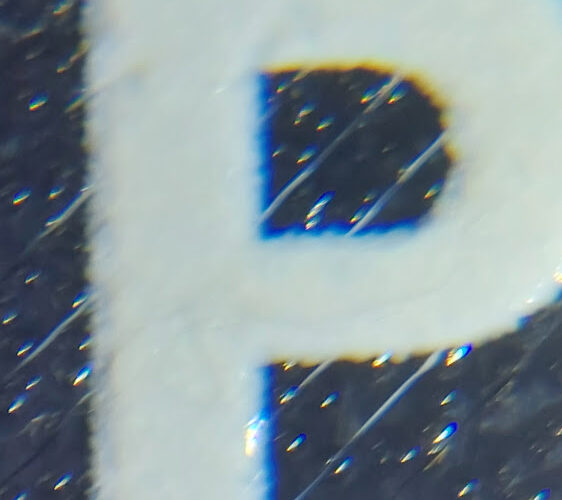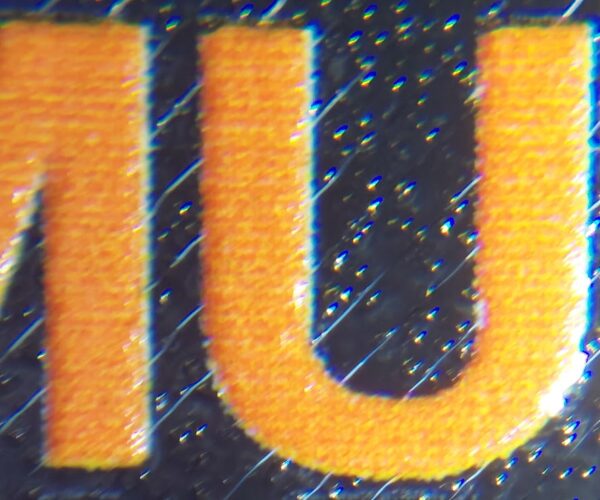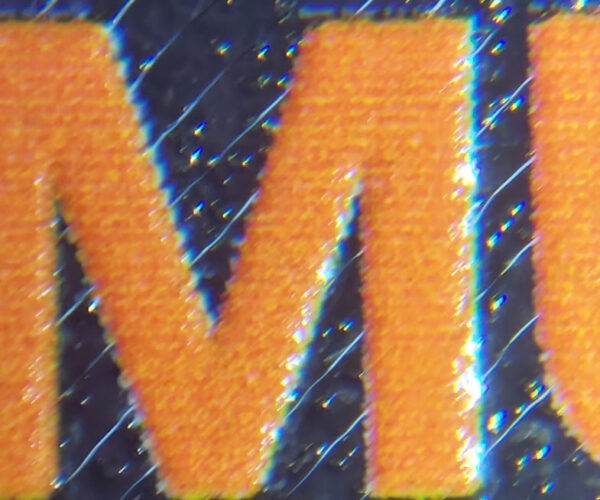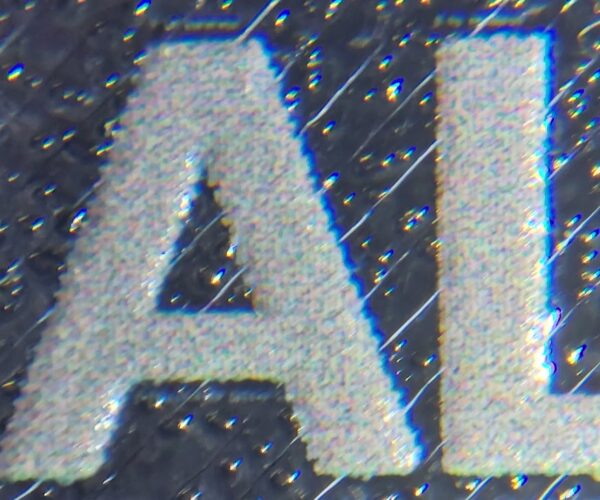HOW WAS DONE (PRUSA please tell us...)
Hello,
starting with the MK4, PRUSA started to put text on parts. You can see it on the MK4 LCD display and even on the MMU3 bar.
At the beginning I though it was just a multicolour print that could be easily obtained with an MMU2/3, but then I starting to observe it carefully with a macro and microscope, and surprise surprise, it was not how I though it was:
- it is printed on the bottom of the part (the one that was on the plate, but theoretically under the level of the plate...)
- it is on the top of the first layer (it means it has been added on the top of the part over the texture AFTER the part was detached from the plate)
- it is very thin but strongly opaque, so as example the white is not transparent for the colour behind. This is difficult to obtain with a 0.2 normal plastic PLA/PETG layer. It seems more covering enamel.
- it is very well defined and detailed, probably printed with something capable of 0.1 or 0.05 or even 0.06
- the white PRUSA is done with around 80 microlines of around 0.06
- the colours are obtained with an infill of lines or dots added to the top layer as an inkjet
- the gray ORIGINAL text is in reality created with thousands of microscopic cyan-magenta-yellow-black dots forming the gray colour as you can see in the image
- the orange text is really a yellow base colour with microscopic rows of magenta dots, as you can see on the pictures
The P above is composed of around 80 micro horizontal lines, but in several layers
The MU is a base yellow MU with rows of magenta pixels on the final layer
the AL is a while base with a grid of Cyan-Magenta-Yellow-Black dots.
Sorry for the non perfect focus, I will try to get more in focus picture.
So this text is not done with a "normal" 3D printer.
The point is that it is neither obtained with traditional techniques like:
- simple ink spread with typographic rolls
- coloured silicone
- simple coloured paint using stencils
- So how they printed it ?
- Do they have a special printer to do that or have they built some kind of tricky machine ?
I know it exists a 3D colour printer capable of creating colours by spreading an inkjet colour layer on the top of the melted plastic, and form colour exactly like the AL and M letters looks like, however printing ON TOP of the PETG piece is not trivial.
Since they printed the part over the textured side, this means the part was put on the bed of the mystery printer, and they were able to print OVER the PETG part it at the correct Z height 😧
- Anyone recognize the technology ? Any idea ?
BR
RE: HOW WAS DONE (PRUSA please tell us...)
According to a reply on the Prusa Blog:
The multi-color parts are printed with an inkjet printer using an UV-cured ink on a 3D-printed part.
RE: HOW WAS DONE (PRUSA please tell us...)
I recently watched a vid about backyard manufacturing and the chap here has the same type of printer from the looks of it. If you want to see one in action.



